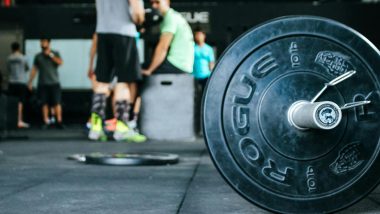Have you ever thought that munching on foods like pasta, bread, potatoes, biryanis and other foods high in carbs could prove beneficial? If not, then you should definitely consider adding more carbohydrates to your diet. It's called carb loading and it's mostly used by endurance athletes involved in long-lasting aerobic activities like cycling, running, swimming, etc. The advantages of carb loading are many. It helps not only in increasing muscle mass but also in preventing its loss. But it is important to keep a few things in mind before you try carb loading like when to eat cards and what activity will benefit from it. Here's what you should know about carb loading. Low Carb Diet Side Effects: What Happens When You Go Off Carbohydrates For Weight Loss.
Carbohydrates is one of the main macronutrients along with protein and fat. In a regular diet regime, it is suggested to intake meal that has carb, protein and fat in a ratio of 2:1:1, which itself shows that carbs are generally required in larger quantities as they help create immense energy.
What is Carb Loading?
It is a tactic to maximise the amount of glycogen available in muscle and liver, which is a stored carbohydrate used by the body for energy. This proves effective for long-duration aerobic activities like long-distance running, cycling, etc. It must be noted that for prolonged physical activity, the carbs should fuel up our body instead of protein. Many make a blunder in their training by consuming less amount of carbs, which leads to muscle loss. As inadequate carbs for a longer duration workout will force the body to use proteins to generate energy, and we all know that protein should only be used to repair the muscles which break down after a workout to avoid muscle loss.
How and When to Load on Carbs and What are Its Benefits?
Carb loading should mostly be done 24-48 hours prior to any longer duration endurance activities like marathon running or long-distance cycling, where a person should aim at eating complex and starchy carbs like pasta, rice, bread and potatoes alongside with some good source of protein. Most guidelines recommend consuming 10-12 grams of carbs per kg of your body weight in the 36-48 hours prior to high-intensity aerobic activities which last more than 90 minutes. National Pizza Day 2019: Is Pizza Healthy? Important Facts about Your Favourite ‘Nutritious’ Junk Food.
Even if you are not involved much in aerobic exercises and mostly do anaerobic exercises like weight training and sprint, even then you should not skip carbs completely. Although the intake should be very less compared to the one involved in longer duration aerobic activities. For an anaerobic group, the proportion of carbs should be consumed in such a way that it perfectly balances the proportion of essential macronutrients-carb, protein and fat.
(This article is written for an informative purpose and should not be substituted for medical advice. Kindly consult your doctor before trying any tips.)
(The above story first appeared on LatestLY on Feb 14, 2019 01:24 PM IST. For more news and updates on politics, world, sports, entertainment and lifestyle, log on to our website latestly.com).













 Quickly
Quickly





















